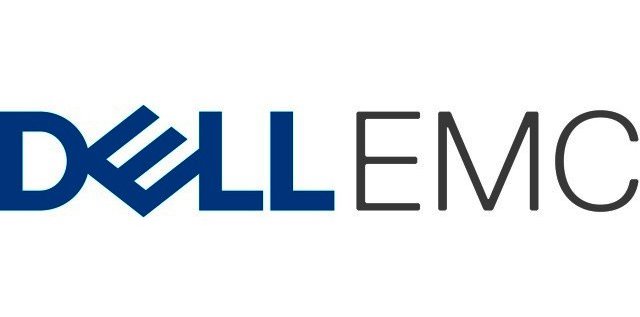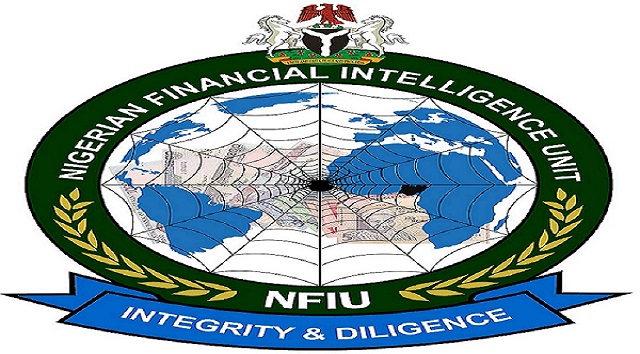E-Business
Dell EMC Expands Data Protection Capabilities

Dell EMC has unveiled new and enhanced capabilities to the Dell EMC Data Domain and Integrated Data Protection Appliance (IDPA) portfolio of backup storage appliances designed to offer organisations real-world flexibility and value with expanded multi-cloud capabilities and improved performance.
The enhancements also provide mid-sized organisations and remote offices of larger organisations with more choice and options in obtaining enterprise-level data protection.
According to IDC, 92 percent of organisations have adopted a cloud environment with 64 percent adopting a multi-cloud approach.3 With a mix of different clouds, protecting data across workloads while meeting compliance and security requirements is a critical challenge for many organisations.
In fact, according to a study conducted by IDC for Dell EMC, cross-cloud support was the highest recognised data protection deficiency for IT transformation.4 Dell EMC recognises this challenge and continues to enhance its data protection appliances to help customers mitigate risk and protect their most valuable asset – their data – in multi-cloud environments.
Multi-cloud capabilities
Data Domain OS 6.2 and IDPA 2.3 software now provide customers with even more choice to extend their data protection to public clouds with expanded Cloud Tier support to Google Cloud Platform and Alibaba Cloud, thereby, enabling more flexibility for long-term retention.
This is in addition to support already offered across AWS, Microsoft Azure, Dell EMC Elastic Cloud Storage, Virtustream, Ceph, IBM Cloud Open Storage, AWS Infrequent Access, Azure Cool Blob storage and Azure Government Cloud. Also, a new Free-space Estimator Tool for Cloud Tier helps enable more efficient capacity management to help reduce on-premises and cloud storage costs.
Dell EMC also expanded its ecosystem of supported public cloud providers for Data Domain Virtual Edition (DD VE), which provides software defined data protection on-premises and in public clouds, to AWS GovCloud, Azure Government Cloud and Google Cloud Platform. This adds to the already supported platforms AWS S3 and Azure Hot Blob.
The expanded cloud ecosystem combined with the previously announced increased capacity for DD VE – up to 96TB per instance – ensures customers will receive the same level of protection within their growing cloud environments as they receive from their on-premises Dell EMC appliances.
Additionally, Native Cloud Disaster Recovery is now available across the entire IDPA family, enabling customers to cost-effectively failover to a cloud environment with end-to-end orchestration. Customers no longer have to bear the expense and management of setting up and maintaining a secondary site for disaster recovery and can failover to public clouds with ease in case of a disaster event and failback when the issues are resolved.
With this expansion, all Data Domain and IDPA models support AWS, including VMware Cloud on AWS, and Microsoft Azure for Cloud Disaster Recovery.
Organisations will also find peace of mind in that all Dell EMC data protection appliances provide modern, simple-to-manage user interfaces. Also, administrators can easily manage multiple Data Domain and DD VE appliances – on-premises or in public clouds – from a single user interface with the Data Domain Management Center.
Enhanced performance
Updates to the IDPA family now provide more performance for Instant Access and Restore with an enhanced data cache that results in up to four times more inputs/outputs per second (IOPS), providing up to 40,000 IOPS with as little as 20 milliseconds latency.5
Also, Data Domain appliances provide faster restores from an on-premises appliance and faster recalls from public clouds. Given these enhancements, organisations can now restore their data up to two-and-a-half times faster from a Data Domain appliance1 and recall their data up to four times faster from the cloud2 to a Data Domain appliance, allowing them to meet more stringent SLAs.
More options for mid-sized organisations
Choice and scalability are critical for smaller, mid-sized organisations that require enterprise-level, cloud-enabled data protection. In addition to cloud and performance updates, Data Domain DD3300 – a 2U appliance specifically designed for mid-sized organisations and larger enterprises with remote offices – has new hardware enhancements. DD3300 now offers an additional 8TB capacity model that can scale and grow-in-place to 32TB. Also, DD3300 now comes with faster networking capabilities with support for 10GbE and expanded backup options for virtual tape libraries (VTL) over Fiber Channel. These options provide mid-sized organisations with a cloud-enabled data protection solution that can grow as their needs change.
Supporting Quotes:
“As the industry leader in data protection appliances6, Dell EMC is committed to delivering continued innovation in our data protection portfolio that supports and improves customers’ adoption of multi-cloud environments,” said Beth Phalen, president, Data Protection, Dell EMC. “Our appliances are powerful, simple to manage and make it easy to expand to public clouds with native cloud capabilities.”
“Our long-standing relationship with Dell EMC has resulted in numerous successes for our business. We’re experiencing cost savings, greater efficiency and faster backup and recovery times with Dell EMC Data Domain and IDPA,” said John McFall Senior Vice President, Enterprise Technology Group, Security Service Federal Credit Union. “These results combined with the fact that our data is safe and secure allows me to sleep well at night.”
“Data protection efforts are a foundational part of the digital transformation efforts many organisations will embark on by 2020,” said Phil Goodwin, Research Director, IDC. “Purpose-built backup appliances, like Dell EMC Data Domain and Integrated Data Protection Appliance, have become a cornerstone of data availability improvement efforts.
They provide faster, more reliable backup with fewer job failures than other data protection options and, more importantly, support faster data restoration in the event of a loss which directly impacts an organisation’s bottom line.”
E-Business
ChatGPT-mimicking Cyberthreats Surge 115% in Early 2025, SMBs Increasingly Targeted

In 2025, nearly 8,500 users from small and medium-sized businesses (SMBs) globally faced cyberattacks where malicious or unwanted software was disguised as popular online productivity tools, Kaspersky reports.

Based on the unique malicious and unwanted files observed, the most common lures included Zoom and Microsoft Office, with newer AI-based services like ChatGPT and DeepSeek being increasingly exploited by attackers. Kaspersky has released threat analysis and mitigation strategies to help SMBs respond.
Kaspersky analysts explored how frequently malicious and unwanted software are disguised as legitimate applications commonly used by SMBs, using a sample of 12 online productivity apps. In total, Kaspersky observed more than 4,000 unique malicious and unwanted files disguised as popular apps in 2025. With the growing popularity of AI services, cybercriminals are increasingly disguising malware as AI tools.
The number of cyberthreats mimicking ChatGPT increased by 115% in the first four months of 2025 compared to the same period last year, reaching 177 unique malicious and unwanted files. Another popular AI tool, DeepSeek, accounted for 83 files. This large language model launched in 2025 immediately appeared on the list of impersonated tools.
“Interestingly, threat actors are rather picky in choosing an AI tool as bait. For example, no malicious files mimicking Perplexity were observed. The likelihood that an attacker will use a tool as a disguise for malware or other types of unwanted software directly depends on the service’s popularity and hype around it. The more publicity and conversation there is around a tool, the more likely a user will come across a fake package on the Internet.
To be on the safe side, SMB employees – as well as regular users – should exercise caution when looking for software on the Internet or coming across too-good-to-be-true subscription deals. Always check the correct spelling of the website and links in suspicious emails. In many cases these links may turn out to be phishing or a link that downloads malicious or potentially unwanted software,” says Vasily Kolesnikov, security expert at Kaspersky.
Another cybercriminal tactic to look for in 2025 is the growing use of collaboration platform brands to trick users into downloading or launching malware. The number of malicious and unwanted software files disguised as Zoom increased by nearly 13% in 2025, reaching 1,652, while such names as “Microsoft Teams” and “Google Drive” saw increases of 100% and 12%, respectively, with 206 and 132 cases.
This pattern likely reflects the normalisation of remote work and geographically distributed teams, which has made these platforms integral to business operations across industries.
Among the analysed sample, the highest number of files mimicked Zoom, accounting for nearly 41% of all unique files detected. Microsoft Office applications remained frequent targets for impersonation: Outlook and PowerPoint each accounted for 16%, Excel for nearly 12%, while Word and Teams made up 9% and 5%, respectively.
The top threats targeting small and medium businesses in 2025 included downloaders, trojans and adware.
Phishing and spam
Apart from malware threats, Kaspersky continues to observe a wide range of phishing and scam schemes targeting SMBs. Attackers aim to steal login credentials for various services — from delivery platforms to banking systems — or manipulate victims into sending them money through deceptive tactics. One example is a phishing attempt targeting Google Accounts.
Attackers promise potential victims to increase sales by advertising their company on X, with the ultimate goal being to steal their credentials.
Beyond phishing, SMBs are flooded with spam emails. Not surprisingly, AI has also made its way into the spam folder — for example, with offers for automating various business processes.
In general, Kaspersky observes phishing and spam offers crafted to reflect the typical needs of small businesses, promising attractive deals on email marketing or loans, offering services such as reputation management, content creation, or lead generation, and more.
E-Business
NFIU Credits AML/CFT Reforms behind Nigeria’s Nears Exit from FATF Greylist

Nigerian Financial Intelligence Unit (NFIU) has credited a series of strategic reforms under the national Anti-Money Laundering, Counter-Financing of Terrorism, and Counter-Proliferation Financing (AML/CFT/CPF) framework, behind Nigeria’s significant strides toward exiting the Financial Action Task Force (FATF) greylist, marking a critical milestone in the country’s fight against money laundering, terrorist financing, and financial crimes.

In a statement, Chief Executive Officer of NFIU, Hafsat Bakari, praised the collective efforts of government agencies and stakeholders. “Congratulations and a job well done as Nigeria comes closer to exiting the FATF grey list. The results achieved as part of the strategic reforms must be applauded,” she said.
She said the NFIU, serving as the Secretariat of the Inter-Ministerial Committee on AML/CFT/CPF, spearheaded the development of a comprehensive roadmap to address deficiencies highlighted in Nigeria’s 2021 mutual evaluation report. She explained that the roadmap was recently reviewed and endorsed at the FATF Plenary in Strasbourg, France, where it was acknowledged that Nigeria has completed the implementation of its Action Plan within the agreed deadline—a rare achievement among listed jurisdictions.
Bakari emphasised the pivotal role of political leadership in this success: “The clear focus and leadership of His Excellency, President Bola Ahmed Tinubu GCFR, provided an enabling environment for the reform processes. His dynamic leadership, alongside the support of the Federal Executive Council and the National Assembly, has been a critical success factor.”
She also highlighted the crucial contributions of the Judiciary, which has demonstrated the effectiveness of Nigeria’s legal framework in combating financial crimes. The Attorney-General of the Federation and Minister of Justice, Minister of Finance and Coordinating Minister of the Economy, and the Minister of Interior, who led the Inter-Ministerial Committee, were credited for providing strategic direction.
“The commitment of these key officials, along with support from the National Security Adviser and various ministers, has been instrumental in driving the reforms forward,” Bakari noted.
A broad coalition of agencies formed the backbone of the national effort, including the Central Bank of Nigeria, Economic and Financial Crimes Commission (EFCC), Federal Inland Revenue Service (FIRS), Nigeria Customs Service, Nigeria Police Force, and many others. Their coordinated efforts have strengthened Nigeria’s defenses against illicit financial activities.
Despite the progress, Bakari cautioned that key steps remain before Nigeria can officially exit the greylist. “A critical upcoming milestone is the onsite assessment by the FATF in the next few weeks. This assessment is an opportunity to demonstrate Nigeria’s highest political commitment to sustaining the reform programme and to showcase the impressive results achieved by both public and private sectors in preventing, detecting, and disrupting serious crimes.”
She reaffirmed the NFIU’s dedication to the ongoing fight: “The NFIU remains committed to supporting and working with all stakeholders in strengthening our collective defenses against money laundering, terrorist financing, and other serious crimes.”
E-Business
AfCFTA Positions Africa to Tap into $712bn Digital Trade Market by 2035

The African Continental Free Trade Area (AfCFTA) is strategically positioning Africa to tap into a $712 billion digital trade market by 2035, leveraging key partnerships and trade-enabling infrastructure to deepen continental integration and economic sovereignty.

Wamkele Mene, Secretary General of the AfCFTA Secretariat, made this known on Wednesday at the 2025 Afreximbank Annual Meetings (AAM2025) in Abuja.
According to him, the Protocol on Digital Trade is central to AfCFTA’s strategy for unlocking the potential of Africa’s growing digital economy.
“We intend to harness this significant market, which is estimated to be over $712 billion by the year 2035, presenting opportunities for young entrepreneurs, investment in data centres, the commercialisation and movement of data, and the development of digital public infrastructure,” Mene said.
He emphasised the critical role of Afreximbank in providing the financial architecture required to support the AfCFTA’s implementation, especially in reducing and eliminating tariff and non-tariff barriers.
“Without the support of Afreximbank, the AfCFTA will not succeed. It requires trade finance tools, support for industrial development, green trade, and green industrialisation,” he added.
Among the tools introduced in collaboration with Afreximbank is the Pan-African Payment and Settlement System (PAPSS), which enables intra-African payments in local currencies, reducing dependence on the US dollar and lowering transaction costs. Mene stressed that trading in foreign currencies like US dollar between African countries is no longer sustainable.
“We must use our own currencies. We must ensure the economic sovereignty of our continent and guard ourselves against ever-shifting global geopolitical tensions that affect payment systems,” he said.
He also disclosed that $10 billion has been mobilised under the AfCFTA Adjustment Fund to support countries implementing the agreement, with an initial ZIP package of $1 billion. Furthermore, a $1 billion AfCFTA Automotive Fund has been established to support component manufacturers and vehicle assembly on the continent. The sector, if well-supported, could generate $46 billion by 2035.
Additional initiatives include the AfCFTA E-Tariff platform, the Rules of Origin Manual, and the soon-to-be-launched Transit Guarantee System, which are all geared towards simplifying trade procedures and boosting intra-African trade.
“We have moved beyond political aspirations to establishing a functional and legally binding multilateral African trading system. This includes protocols on investment, competition policy, and digital trade,” Mene said.
Despite these milestones, he warned that numerous challenges persist. These include inefficient customs systems, high trade costs that limit SME market entry, political instability, and persistent food insecurity which blocks smallholder farmers from accessing markets. He called for continued collaboration between political leaders and development finance institutions to address these obstacles.
“We should be proud of what we have achieved, but also mindful of the difficult journey ahead. Conflict and instability, particularly in rural regions, continue to prevent millions of farmers from accessing markets. We must tackle these issues with urgency if the full potential of AfCFTA is to be realised,” Mene said.
During a question and answer after the launch of African trade and economic outlook report, Yemi Kale, Group chief economist and managing director of Research and Trade Intelligence at the African Export Import Bank, said between May 2024 and 2025 transaction volume through Pan-African Payment and Settlement System (PAPSS) increased by over 1,000 percent, reflecting increased adoption of the payment system.

 General News1 day ago
General News1 day agoNigeria’s BNPL Market is Projected to Value @ $2.6B by 2030

 Telecom1 day ago
Telecom1 day agoFree WiFi Meets Mega Entertainment at the Grand Opening of Solution Fun City

 E-Financial1 day ago
E-Financial1 day agoNIA Puts Industry Written Premium @ N1.5trn in 2024

 E-Financial2 days ago
E-Financial2 days agoFlutterwave Named in 2025 TIME100 Most Influential Companies List

 Telecom1 day ago
Telecom1 day agoInstagram Safety Tools Every Parent Should Know About

 General News2 days ago
General News2 days agoAfDB Cuts Nigeria’s Growth Projection to 3.2%

 Telecom2 days ago
Telecom2 days agoNCC Unveils Landmark RIA Report, Reinforces Stakeholder-Centric Regulation

 General News2 days ago
General News2 days agoFG, Netherlands Partner on Digital Migration for NIS

























